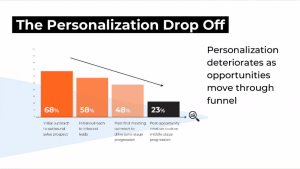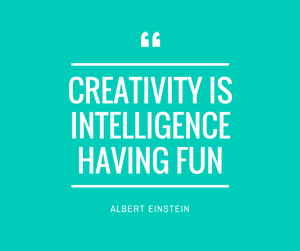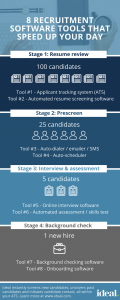The term Internet of things (IoT) refers to a system of interrelated computing devices, digital and mechanical machines, animals, objects or people that receive unique identifiers that enable them to transfer data across a network with no need for human-to-consumer or human-to-human interaction.
A Thing, in the IoT, can be a person with a heart monitor implant, an animal with a biochip transponder ora car with inbuilt sensors to alert the driver when the tire pressure is low. It could also be ahuman-made or natural object that can be assigned an IP address and given the ability to transfer data over a network.
Internet of things has evolved from the convergence of wireless technologies, micro-services, micro-electro-mechanical systems and the Internet. Now the question is, if it does transform businesses, and if it does then how.
Transportation and Fleet Management
Connecting road systems, drivers, and vehicles to the web will continue to open up excellent opportunities for reducing costs and maximizing efficiency. It also saves a lot of energy and thus continues to promote the green initiative in the global market.
Sensors can transmit information on changes in drop-off or pick-up demands, road conditions, real-time traffic updates and routing options, which improves drivers’ efficiency and delivery times. Corporations will be able to centrally manage and monitor goods while retaining visibility over drivers’ behavior. Fleet management firms pioneered this initiative through the IoT and Mobile Cast app technology.
In the meantime, real-time traffic information and spotlights that have embedded video sensors can adjust signaling patterns and minimize unnecessary stoppage, which saves time and prevents fuel lost from idling at red lights in busy towns. Additionally, drones and smart parking monitors reduce the congestion that comes as drivers cruise the street as they look for a spot. The primary objective of the smart vehicular technology is to alert firms about the required maintenance; it can even place an order on their behalf. The system could also notify a central location whenever an issue arises.
Fleet management and operation specialists make use of vehicle telemetry to feedback metrics and information on location by fitting sensors on various components of the vehicle. This idea spans GPS information and real-time tracking through to maintenance alert, temperature, and speed, just to name a few.
Asset Tracing and Tracking
If you are running an asset-intensive enterprise, you will appreciate the challenges presented by maintaining control and visibility over them. It could be in the form of inventory, facilities and computer hardware, just to name a few. The Internet of things can help you to monitor devices, workplaces, and equipment to drive outcomes, safety, and productivity.
You can have the stock re-order itself in an automated manner when the business supplies run low and sent alerts when disruption or spillage occurs during production. The Internet of things can show you the location of some assets such as goods, vehicles and other services. It can also reflect whether employees who are off the premise have the right equipment to complete a particular task.
Think of a business environment where a customer places an order through intuitive intelligence and the IoT books the employee that will complete the order and bring together all the required information, vehicles, tools and materials to the right place and at the required time. It can consider all service bookings around to ensure minimum movement and maximum efficiency to save on cost, energy and time.
Payment (Parking, ATM, Vending and POS)
The Internet of things is already kicking and alive in the business payment world. One of the real life IoT success cases is Apple following the introduction of Apple Pay that allows you to pay with your smartphone through a wearable technology, such as watches. Future developments may see retailers andrestaurants register their customers the moment they step on site. They will charge them electronically as they digitally place their food order or permit customers to walk out of the door and send an e-receipt of all the tracked items at the exit.
Facilities like clubs and gyms will be able to provide a ‘pay per use’ service that will use GPS tracking to charge the client according to the frequency and time that they used the facility. Integrated ‘city pass’ applications can give individuals a one-stop-shop for all government and transport facilities. You can pay for your entrance, car, bus or ferry parking fees seamlessly.
Remote Control and Monitoring
There is already a significant decrease in the presence of human beings on the production line. Remote surveillance and oversight will continue to play a critical role in the healthcare and manufacturing industries as the IoT continues to grow. Currently, diabetic patients can buy add-on devices that can record and transmit blood sugar readings and monitor their medication.
A broad range of fitness programs can also allow you to record what you eat, the rate of heartbeat and blood pressure, quality of sleep and the frequency of exercising. Transmission of this information will assist doctors to prescribe the best medication depending on the unique needs or profile of the patient.
In the manufacturing industry, plant managers can now monitor and respond to real-time metrics, notice personnel and equipment failures to deal with issues promptly and ensure maximum efficiency. They can undertake all these responsibilities without being physically present in the facility. You can transmit this into the office to track meetings and monitor if an employee is absent in real time. The IoT also allows businesses to provide analytics on productivity or performance and much more.
Summary
The whole world is moving towards the Internet of things. The role of human beings in business and the production process will continue to decrease drastically. The IoTcomes with a better way of trading in a fast and cost-effective manner. Therefore, the Internet of things is changing the way of doing business.
Business & Finance Articles on Business 2 Community(91)




